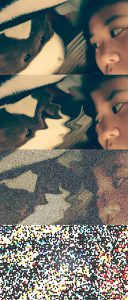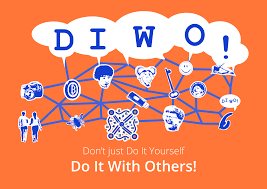DIWO and Maker Culture
During our Week 5 lesson we had the chance to have a lecture with Marc Garrett. He talks about the Furtherfield and how the idea of ‘Do-It-With-Others’ (DIWO) has allowed them to achieve greater heights.
What is so great about this idea of DIWO though?
Whilst many artist are able to create artworks by themselves, DIWO brings across this idea of community, a sort of shared experience that can be felt amongst others. It becomes a more accessible art, and even in the case they are almost like volunteery projects that help the community, or ‘Values-In-Action’ as we call it in Singapore.
(Source taken from: https://www.facebook.com/Furtherfield/)
On their website thery have various workshops like ‘Design 4 ACTION! Permaculture Course’ and exhibitions all aimed towards helping the community.
It explores the extent of which those who view and interact with work, including those from under-represented groups, becomes co-producers in the network, rather then the ‘audience’.

(Source taken from: http://www.tate.org.uk/art/artworks/beuys-7000-oak-trees-ar00745)
When I think large scale community progects I think of this art project by Joseph Beuys, ‘7,000 oaks’. ‘7,000 oaks’ start with 7,000 basalt stone, each a pair to one of the 7,000 trees, were piled in front of the Museum Fridericianu. Everytime a tree was planted the pile was reduced. While the project idea was started by one man, it took a community to help make this project successful, and later the project spread further into other communities with this idea of wanting to change.
Maybe in a way, its because this issues are important to the community, which will eventually become the drive, all the call to action.
Subsequently there is this idea of pooling ideas together to create something better.
Furtherfield connects people to new ideas, critical thinking and imaginative possibilities for art, technology and the world around us. Through artworks, labs and debate people from all walks of life explore today’s important questions.
Similar to them, our Experimental Interaction lessons aim to nuture this idea of collaboration. In our micro-project the tele-stroll, we made use of the idea of the third space to create a video where two people in two different locations could interact as either a single person, or keep the company of each other. It is playful and brings together the ideas of two individuals to create something even better.
Even a bit more recently, there is the idea of our glitched art works, which is a combination of the ideas of various people. It comes out differently, sort of representing how different each and everyone of us thinks.

The Conclusion
Thinking about it now, two heads are always better then one, and thats because our ideas are different, the way we work is different, and thats probably why DIWO would be a good thing for the makers culture, as the ideas of many would result in something far more creative then just the ideas of one.


I was very interested in your reference to Values-In-Action, a term I wasn’t familiar with but which I think nicely expresses Furtherfield’s commitment to art for social change. Also impressive is your reference to Joseph Beuys’ 7000 Oaks, which is a perfect example of DIWO, public art, and the collaboration between the artist and the viewer. This is certainly a very helpful way to think about interaction in the broader sense that breaks down the division between the artist and audience. Some comments: I would have liked to have seen more specifics about Furtherfield’s work and references to Mark Garrett’s talk, in which he laid out a very nice history of Furtherfield and its DIWO projects. You have a good overall description of DIWO, but more specific examples from Furtherfield’s work would have been helpful.